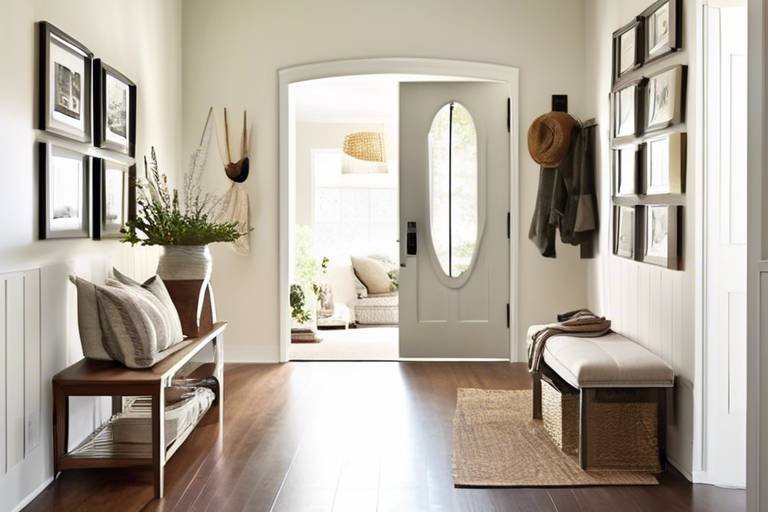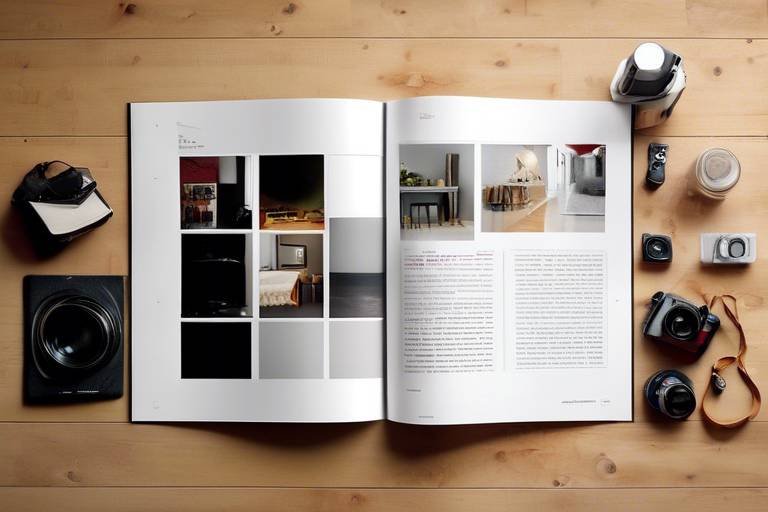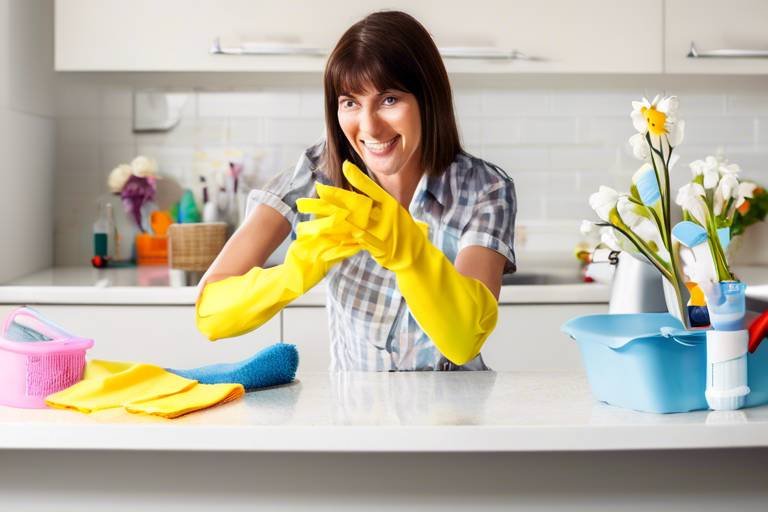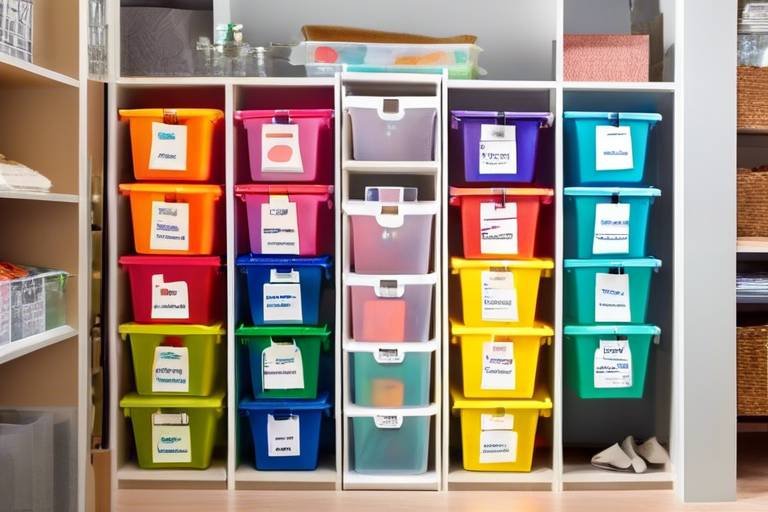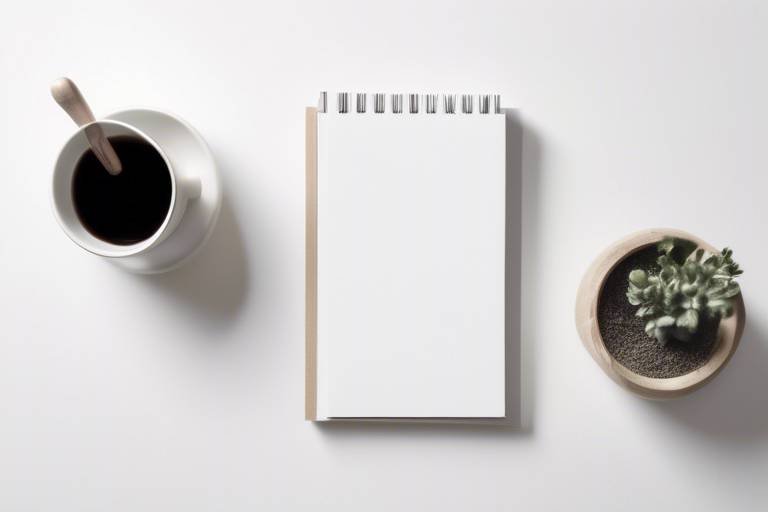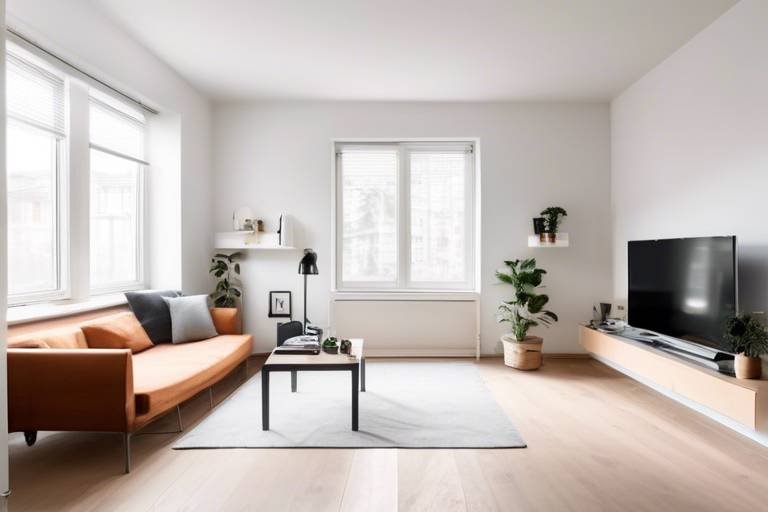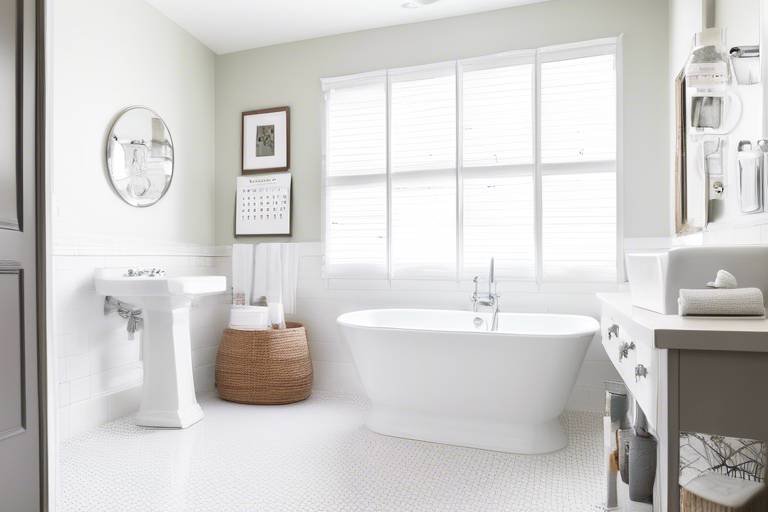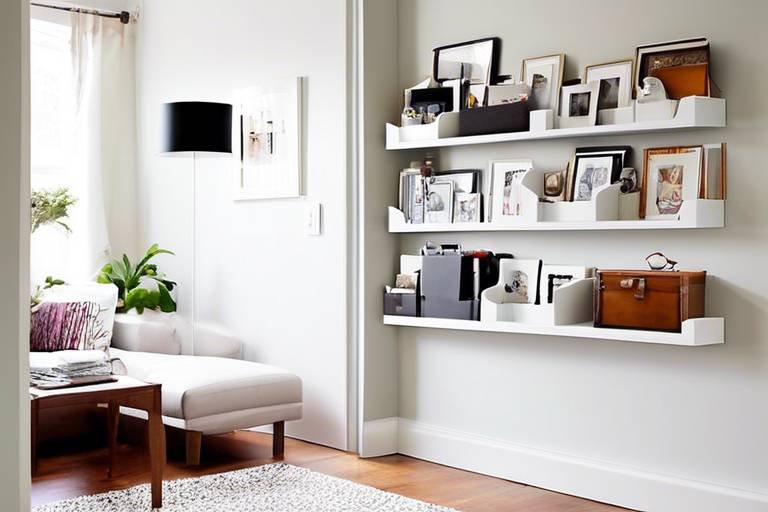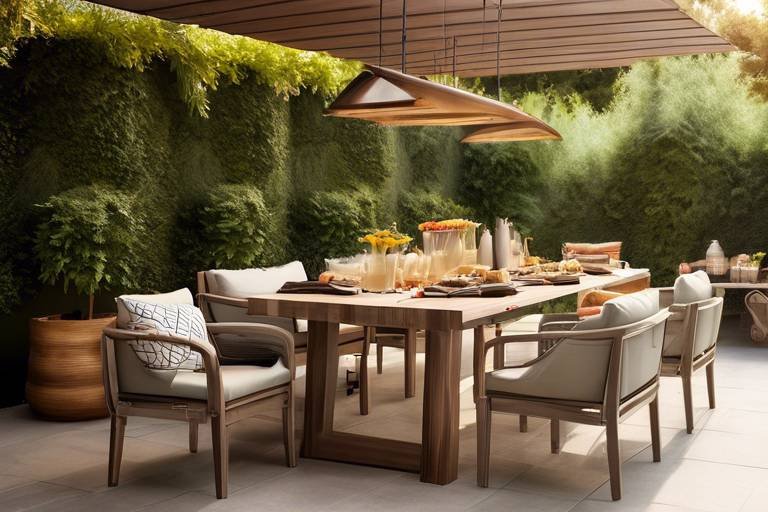How to Create a Functional and Beautiful Entryway
Creating a functional and beautiful entryway is essential for setting the tone of your home. It's the first thing guests see when they enter, so why not make it a stunning first impression? By carefully selecting furniture, optimizing lighting, incorporating decorative elements, organizing efficiently, choosing the perfect flooring, adding personal touches, creating a functional layout, and maintaining the space, you can transform your entryway into a welcoming and stylish area that reflects your personality.

Choosing the Right Furniture
When it comes to creating a functional and beautiful entryway, one of the key elements to consider is choosing the right furniture. The furniture you select can not only maximize storage space but also complement the overall aesthetic of your entryway, setting the tone for the rest of your home.
Opting for furniture pieces that serve a dual purpose, such as a bench with storage or a console table with drawers, can help keep your entryway organized and clutter-free. These practical pieces not only provide storage for items like shoes, bags, and keys but also add to the visual appeal of the space.
Additionally, consider the style and material of the furniture to ensure it aligns with the design theme of your entryway. Whether you prefer a modern, minimalist look or a more traditional feel, choosing furniture that complements the overall aesthetic can tie the space together seamlessly.
Another aspect to keep in mind when selecting furniture for your entryway is the size of the space. Opt for pieces that fit proportionally in the area without overwhelming it, allowing for easy movement and flow within the space.
Lastly, don't be afraid to mix and match different furniture pieces to create a unique and personalized entryway. Combining different textures, colors, and styles can add character and charm to the space, making it truly your own.

Optimizing Lighting
When it comes to designing an entryway, lighting plays a crucial role in creating a welcoming atmosphere and enhancing the overall aesthetic. in this space involves a careful balance between functionality and style. By strategically placing light fixtures and choosing the right type of lighting, you can transform your entryway into a warm and inviting space that sets the tone for the rest of your home.
One key aspect of optimizing lighting in the entryway is to consider the natural light sources available. Maximizing natural light not only helps save energy but also brightens up the space, making it feel more spacious and airy. Positioning mirrors strategically can also help bounce natural light around the room, creating a brighter and more welcoming atmosphere.
For areas where natural light may be limited, artificial lighting becomes essential. Choosing the right light fixtures, such as overhead lights, wall sconces, or table lamps, can significantly impact the ambiance of the entryway. Consider the functionality of each light source and how it contributes to the overall lighting scheme.
Layering lighting is another effective strategy for optimizing the entryway's lighting. By combining different types of lighting, such as ambient, task, and accent lighting, you can create a dynamic and versatile lighting scheme. This approach not only enhances the visual appeal of the space but also allows for flexibility in adjusting the lighting based on the time of day or specific needs.
Additionally, lighting control systems can offer convenience and efficiency in managing the entryway lighting. From dimmer switches to smart lighting solutions, these technologies provide customizable options for setting the mood and controlling the brightness levels according to your preferences.
When selecting light fixtures for the entryway, consider the design and style that complement the overall decor theme. Whether you prefer modern, traditional, or eclectic designs, choosing lighting fixtures that align with your aesthetic preferences can tie the space together and create a cohesive look.

Incorporating Decorative Elements
When it comes to creating a welcoming and visually appealing entryway, incorporating decorative elements plays a crucial role. These elements can transform a mundane space into a charming and inviting area that sets the tone for the rest of your home.
One way to enhance the entryway is by strategically placing artwork on the walls. Art pieces can add personality and character to the space, reflecting your unique style and interests. Consider selecting pieces that complement the overall color scheme and design aesthetic of the entryway.
Mirrors are another fantastic decorative element that can make a small entryway appear larger and brighter. They also serve a practical purpose by allowing you to check your appearance before heading out the door. Positioning a mirror strategically can also help bounce natural light around the space.
Plants are a great way to bring a touch of nature indoors and add a pop of color to the entryway. Whether you opt for a large potted plant or a collection of smaller plants, greenery can breathe life into the space and create a refreshing atmosphere. Just make sure to choose plants that thrive in indoor environments and require minimal maintenance.
In addition to artwork, mirrors, and plants, consider incorporating decorative accents such as vases, sculptures, or decorative trays. These items can add texture and visual interest to the entryway, making it feel more curated and inviting. Remember to strike a balance between too much and too little decor to maintain a harmonious look.
By thoughtfully integrating these decorative elements into your entryway design, you can create a space that not only impresses guests but also makes you feel happy and welcomed every time you walk through the door.

Organizing the Space Efficiently
When it comes to organizing the space efficiently in your entryway, it's essential to strike a balance between functionality and aesthetics. One effective way to achieve this is by incorporating multi-functional furniture pieces that offer storage solutions while also serving as decorative elements. For example, a stylish bench with built-in storage can help keep shoes, bags, and other items out of sight, maintaining a clutter-free look.
In addition to furniture, utilizing wall space can greatly enhance the organization of your entryway. Installing hooks or a coat rack provides a convenient spot to hang coats, hats, and bags, preventing them from piling up on the floor. This simple addition not only keeps the space tidy but also adds a touch of charm to the area.
Furthermore, consider implementing a designated area for small items such as keys, mail, and umbrellas. A decorative tray or bowl placed on a console table can corral these essentials, making them easily accessible when needed. By assigning specific homes to these items, you can avoid the common issue of misplaced belongings.
Creating zones within the entryway can also aid in efficient organization. Designating separate areas for different purposes, such as a shoe storage section, a coat hanging area, and a decorative display space, can streamline the functionality of the space. This division of areas not only helps in maintaining order but also adds visual interest to the entryway.
Moreover, incorporating baskets or bins under a console table or bench can provide additional storage for items that tend to accumulate near the entrance. These containers offer a quick and easy solution for stashing away items like scarves, gloves, or pet leashes, ensuring a neat and tidy appearance.
Lastly, don't underestimate the power of decluttering regularly to maintain an efficiently organized entryway. Periodically assess the items in the space and declutter any unnecessary belongings to prevent overcrowding. By regularly purging items that no longer serve a purpose, you can uphold the functionality and beauty of your entryway effortlessly.

Selecting the Perfect Flooring
When it comes to designing an entryway, selecting the perfect flooring is a crucial decision that can significantly impact the overall look and feel of the space. The flooring you choose should not only be visually appealing but also durable, easy to clean, and able to withstand high traffic. It is essential to consider both practicality and aesthetics when deciding on the flooring material for your entryway.
One popular option for entryway flooring is ceramic tile. Ceramic tiles are known for their durability and water resistance, making them an excellent choice for a high-traffic area like the entryway. Additionally, ceramic tiles come in a wide variety of colors, patterns, and finishes, allowing you to find the perfect style to complement your entryway's design.
Another versatile flooring option for entryways is hardwood. Hardwood floors add warmth and elegance to the space while also being relatively easy to maintain. With proper care and maintenance, hardwood floors can last for decades, making them a long-term investment for your home. However, it's essential to choose a hardwood species that is durable and resistant to scratches and dents, such as oak or maple.
If you prefer a more modern look, consider using laminate flooring in your entryway. Laminate flooring is a cost-effective alternative to hardwood that mimics the look of wood or stone. It is easy to install, durable, and resistant to stains and fading, making it a practical choice for busy entryways. Additionally, laminate flooring is available in a wide range of styles and colors, allowing you to achieve the desired aesthetic for your entryway.
For those looking for a more eco-friendly option, bamboo flooring is a sustainable choice that offers both beauty and durability. Bamboo flooring is harder than hardwood and resistant to moisture, making it an excellent option for entryways. Its unique grain patterns and natural color variations add character to the space, creating a welcoming atmosphere for guests.
When selecting the perfect flooring for your entryway, it's essential to consider factors such as durability, maintenance, style, and budget. By choosing a flooring material that meets your practical needs and complements the overall design of your entryway, you can create a functional and beautiful space that sets the tone for the rest of your home.

Adding Personal Touches
When it comes to creating an inviting entryway, adding personal touches is key to making the space feel uniquely yours. Personalizing your entryway can set the tone for your home and leave a lasting impression on visitors. One way to add a personal touch is by displaying family photos or artwork that holds sentimental value. These pieces can create a warm and welcoming atmosphere right from the moment someone enters your home.
Another way to infuse personality into your entryway is by incorporating items that reflect your hobbies or interests. Whether it's a collection of vintage books, travel souvenirs, or handmade crafts, these unique pieces can showcase your individuality and spark conversation with guests. By curating a display that speaks to who you are, you can make your entryway feel more like a reflection of your personality.
Consider incorporating elements that evoke positive emotions and memories. This could be a scented candle with a fragrance that reminds you of a special place, a cozy throw blanket for chilly evenings, or a decorative bowl filled with items that bring you joy. These small details can make a big impact on the overall ambiance of your entryway, creating a welcoming environment that feels like home.
Don't underestimate the power of greenery in adding a personal touch to your entryway. Plants not only add a pop of color and texture but also bring life to the space. Whether you opt for a statement plant in a stylish pot or a collection of smaller plants on a decorative shelf, incorporating greenery can create a sense of tranquility and freshness in your entryway.
Lastly, don't forget about the power of personal mementos. Whether it's a cherished heirloom passed down through generations, a quirky thrift store find, or a handmade piece of art, these items can add character and charm to your entryway. By mixing and matching different elements that hold personal significance, you can create a space that feels truly unique and welcoming.

Creating a Functional Layout
When it comes to creating a functional layout for your entryway, it's essential to consider how the space will be used on a daily basis. Start by assessing the size and shape of the area to determine the best placement for furniture and decor. Consider the flow of traffic in and out of the entryway and ensure that there is enough space for easy movement.
One effective strategy for optimizing the layout is to create designated zones within the entryway. For example, you can designate a specific area for hanging coats and bags, another area for storing shoes, and a separate spot for keys and mail. This division of space helps keep the entryway organized and ensures that everything has its place.
Another important aspect of creating a functional layout is to consider the sightlines in the entryway. Arrange furniture and decor in a way that allows for clear lines of vision and avoids any obstacles that may impede movement. This not only enhances the aesthetic appeal of the space but also contributes to a more user-friendly layout.
Additionally, think about the balance of the elements in the entryway. Avoid overcrowding the space with too much furniture or decor, as this can make the area feel cramped and cluttered. Instead, focus on creating a harmonious arrangement that allows for easy navigation and showcases the beauty of the space.
Remember, the goal of a functional layout is to make the entryway both practical and visually appealing. By carefully planning the placement of furniture, decor, and storage solutions, you can create a welcoming and efficient entryway that sets the tone for the rest of your home.

Maintaining the Entryway
When it comes to maintaining the entryway, regular upkeep and cleaning are essential to ensure that this space remains both functional and beautiful. Dust and dirt can quickly accumulate, so it's important to establish a cleaning routine to keep everything looking its best.
Start by dusting and wiping down surfaces such as furniture, mirrors, and light fixtures. Use a gentle cleaner suitable for the materials in your entryway to avoid damage. Pay special attention to high-touch areas like doorknobs and switches to keep germs at bay.
For flooring, vacuum or sweep regularly to remove dirt and debris. Depending on the type of flooring you have, you may also need to mop occasionally to maintain its appearance. Consider using doormats both inside and outside to prevent dirt from being tracked in.
Organize and declutter the entryway on a regular basis to prevent it from becoming overwhelmed with shoes, coats, and other items. Invest in storage solutions like baskets, hooks, and shelves to keep everything in its place. Encourage family members to put away belongings promptly to maintain a tidy space.
Check the condition of your entryway furniture and decor periodically. Repair or replace any items that show signs of wear and tear to keep the space looking fresh. Consider rotating seasonal decor to keep the entryway feeling updated and inviting throughout the year.
Lastly, don't forget about the lighting in your entryway. Clean light fixtures regularly to ensure they provide optimal illumination. Consider using energy-efficient bulbs to save on electricity costs and reduce the frequency of bulb changes.
Frequently Asked Questions
- What are some key considerations when choosing furniture for an entryway?
When selecting furniture for your entryway, it's important to prioritize pieces that offer both functionality and style. Look for items that maximize storage space to help keep the area organized and clutter-free. Additionally, opt for furniture that complements the overall aesthetic of the space, enhancing its visual appeal.
- How can lighting be optimized in an entryway?
Lighting plays a crucial role in creating a welcoming atmosphere in the entryway. Consider a combination of ambient, task, and accent lighting to illuminate the space effectively. Utilize fixtures like chandeliers, sconces, or table lamps to add both functionality and decorative elements to the area.
- What decorative elements can be incorporated into an entryway?
Adding decorative touches like artwork, mirrors, and plants can significantly enhance the visual appeal of the entryway. These elements not only make the space more inviting but also reflect your personal style. Consider mixing and matching different pieces to create a unique and welcoming atmosphere.
- How can I efficiently organize the entryway space?
To keep your entryway clutter-free and organized, consider implementing storage solutions such as baskets, hooks, and shelves. Designate specific areas for items like keys, shoes, and bags to maintain functionality. Regularly declutter and reorganize to ensure the space remains both efficient and visually pleasing.
- What flooring materials are ideal for an entryway?
When selecting flooring for the entryway, prioritize materials that are durable, easy to clean, and aesthetically pleasing. Options like tile, hardwood, or laminate are popular choices due to their resilience and low maintenance requirements. Choose a flooring material that complements the overall design of the space.

